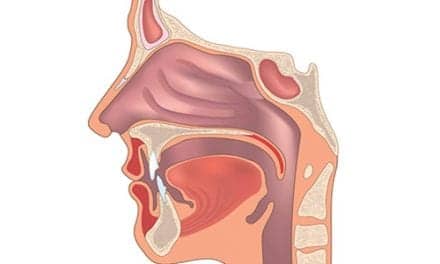Researchers from Children’s Hospital of Philadelphia used electronic health record data from more than 200,000 pediatric patients to describe patterns of pediatric allergies across the United States, validating a population-level pattern of allergy development known as the “allergic march,” in which allergies first present as eczema, followed by food allergies, asthma, and environmental allergies.
The researchers also found that a rare food allergy called eosinophilic esophagitis, which has historically been considered a disease affecting primarily White males, is more common among non-White patients than previously reported.
The findings were published in Pediatrics.
“Allergic diseases are one of the most common causes of impaired quality of life in children, so to improve the diagnosis and care of children with these diseases, it is important that we have an accurate understanding of how widespread they are and the risk factors that are associated with them,” says first author Stanislaw J. Gabryszewski, MD, PhD, a fellow in the division of allergy and immunology at Children’s Hospital of Philadelphia, in a release. “Prior studies have gauged the prevalence and patterns of allergies based on surveys completed by families. By using data from electronic health records, we were able to analyze data from medical providers, which allowed us to examine population-level patterns over time and in a way that minimizes reporting bias.”
To uncover patterns and prevalence of allergic disease, the researchers used the Comparative Effectiveness Research through Collaborative Electronic Reporting Consortium database, which includes data from more than 1 million children across multiple independent primary care practices and health systems within the United States. The researchers focused on five allergic diseases: eczema, also known as atopic dermatitis; IgE-mediated (anaphylactic) food allergy; asthma; allergic rhinitis, sometimes referred to as hay fever; and eosinophilic esophagitis, an emerging and less recognized non-anaphylactic food allergy that causes chronic esophageal symptoms. For each condition, they determined the age at diagnosis and whether and when patients presented with other allergic conditions.
In total, they identified 218,485 children between infancy and 18 years of age with allergies who were observed for more than five years between 1999 and 2020. The researchers found that the average peak age of onset was approximately 4 months for eczema, 13 months for anaphylactic food allergies, 13 months for asthma, 26 months for allergic rhinitis, and 35 months for eosinophilic esophagitis. The most diagnosed anaphylactic food allergies were peanut (1.9%), egg (0.8%), and shellfish (0.6%). They found that 13.4% of children had two allergic conditions, and patients with respiratory allergies like asthma and allergic rhinitis tended to present with both conditions, as well as other allergic conditions.
The researchers also found that the prevalence of anaphylactic food allergies diagnosed by healthcare providers was 4%—approximately half the prevalence in survey-based studies using family-reported data, suggesting prior studies could have included non-anaphylactic food intolerances. The researchers suggest that this discrepancy highlights the importance of providers and families partnering in the diagnoses of food allergy, as well as underscoring that anaphylactic food allergies are often part of a larger allergic picture.
The researchers examined demographic trends to examine non-biologic factors that may affect predisposition to allergy. With regard to race and ethnicity, there was significantly higher representation of Black children among those with eczema and asthma, a significantly higher representation of White children for eosinophilic esophagitis, and a significantly lower representation of Hispanic children with anaphylactic food allergies. Notably, however, even though a majority of eosinophilic esophagitis patients were White males, the researchers found that approximately 40% of patients with eosinophilic esophagitis in their cohort were non-White, which is much higher than previously reported.
“This study provides an important overview of patterns and prevalence of allergic diseases in children, which is crucial as families and pediatricians observe symptoms that could be indicative of emerging allergies,” says senior author David A. Hill, MD, PhD, an attending physician with the division of allergy and immunology at Children’s Hospital of Philadelphia, in a release. “Future studies should seek to define high-risk allergy populations who may benefit from screening and identify potentially modifiable disparities in disease outcomes.”









